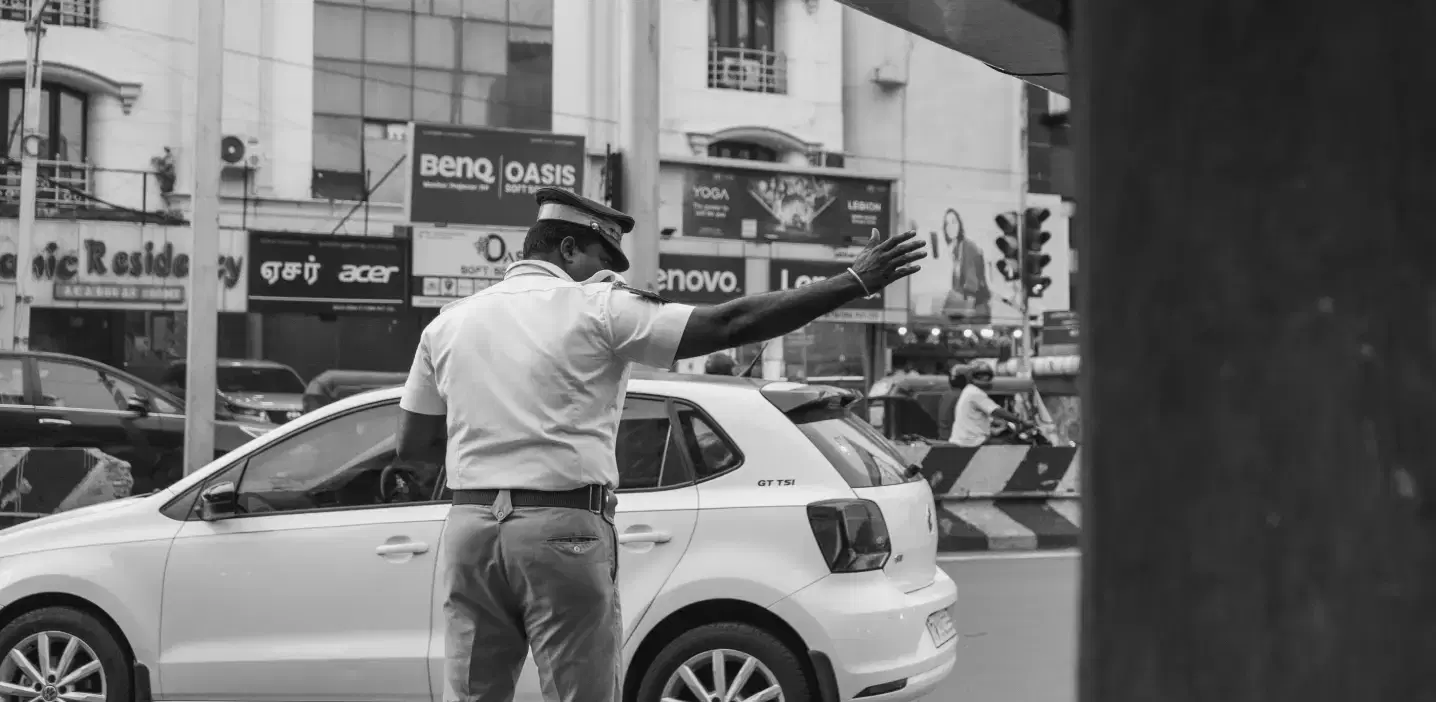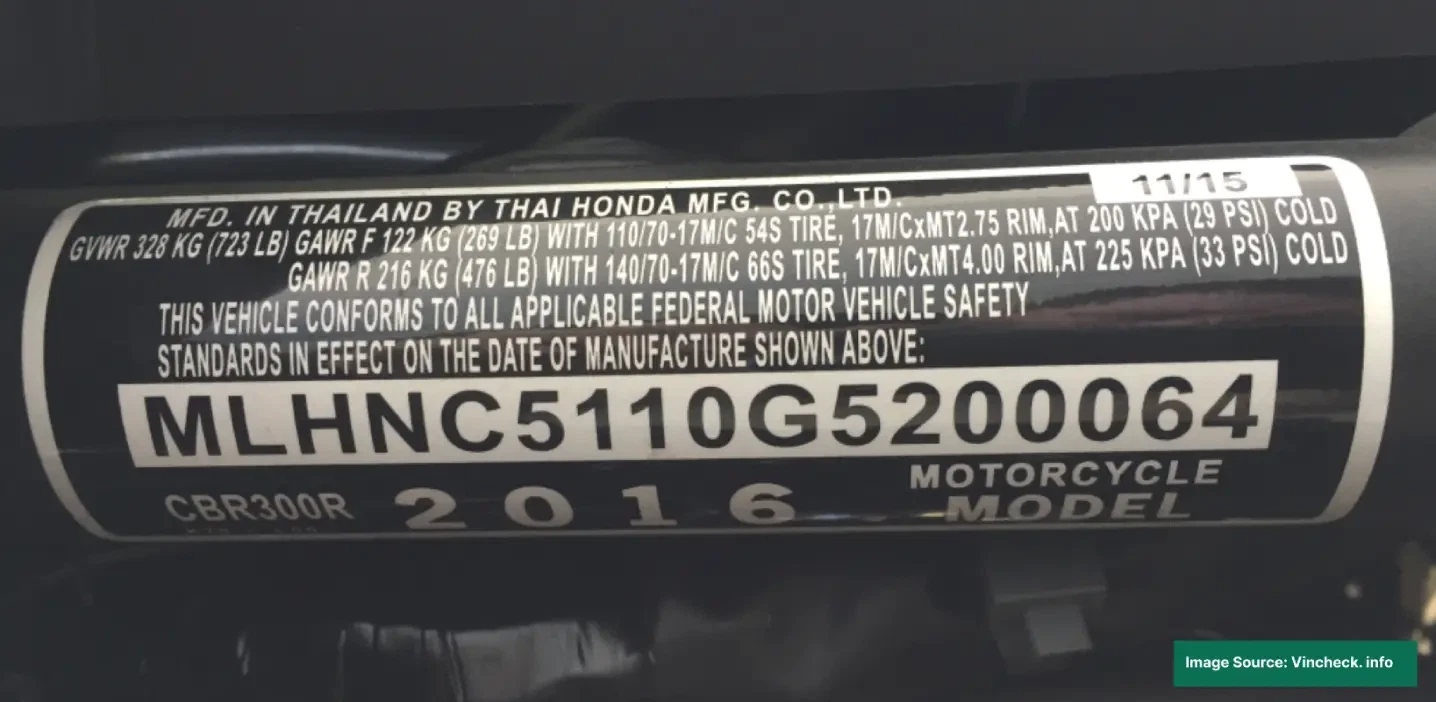
India’s roads are among the busiest in the world, and hence its traffic police and road rules regulations have become stricter and more prevalent over time. We have covered Delhi Traffic Fines, Karnataka Drink & Drive Challans, Mumbai Drink & Drive Penalty. But the gist of the matter is: The Indian Traffic Police is better trained than ever, has more technical assistance than ever, and, quite frankly, more power than ever to enforce some real hard law on the road.
Hence, as a commuter, it’s more important than ever for you to understand the ins and outs of road safety and regulation. To put it bluntly, it is essential for every rider, driver, and pedestrian.
In this guide, we break down the 20 golden rules for road safety that overenthusiastic commuters should be well aware of. But that’s not all. We also go a step further and detail the 5 essential safety rules on the road. We also detail some practical road safety measures, enforcement practices, child-safety notes, vehicle checklists, myth-busting, FAQs and much more.
Want to achieve in-depth knowledge on road safety? Make sure to explore our blog in full.
What is Road Safety?¶
Road safety is the prevention of road users being killed or seriously injured; it covers road design, vehicle safety, user behaviour, enforcement and emergency response.
You can find all the important information about road safety fully detailed in the WHO Road Safety Overview.
In the context of India itself, it works on road safety through the 4-E / 5-E framework: Education, Engineering, Enforcement, and Emergency systems, backed by national policy. You can find it all in the Ministry of Road Transport and Highways (Source: MoRTH Official Reports).
What are the 10 Golden Rules for Road Safety? Explore the Complete List¶
Below are the 10 golden rules for road safety, detailed with contextual information. Absorb it all, and follow them to make a difference in your daily life.
- Stop, look, listen before crossing: Always pause, scan both sides twice, and ensure incoming traffic has slowed before stepping ahead. Prevents sudden pedestrian-vehicle conflicts.
- Use zebra crossings and footpaths: Staying on designated paths keeps you out of the vehicle stream, improving visibility and reducing impact risk.
- Obey traffic signals & signs: Signals create predictable movement. Running red lights or ignoring signs is among the top causes of urban crashes.
- Wear helmets (two-wheelers): ISI-certified full-face helmets reduce head injuries by as much as 70%. Strap it securely every ride.
- Wear seatbelts (all seats): Rear-passenger seatbelts are equally important; unbelted passengers can injure themselves and others during a crash.
- Do not drink and drive: Even small alcohol levels reduce coordination and reaction time. Use cabs or assign a designated driver.
- Don’t use a mobile phone while driving: Hands-free doesn’t solve distraction completely. Put your phone on Do Not Disturb driving mode.
- Follow speed limits & drive to conditions: Rain, fog, potholes, and narrow streets require slower speeds; speed is the highest contributor to crash severity.
- Keep safe following distance: Maintain at least 3 seconds of gap from the vehicle ahead; increase it during rain or low visibility.
- Be visible: Make sure to use lights, reflectors, indicators, etc. Use indicators early when turning, keep lights clean, and wear reflective clothing at night.
Additional 10 rules (fully expanded):
- Slow down near schools & hospitals: Children and patients are vulnerable road users; many cannot judge vehicle speeds accurately.
- Use child restraints/child seats: Adult seatbelts cannot protect children properly; use booster seats and ISOFIX systems.
- Avoid overspeeding or racing: High-speed impact forces multiply drastically with each km/h increase.
- Maintain lane discipline: Drifting lanes confuses drivers and is a major cause of side collisions.
- Give way to emergency vehicles: Ambulances lose critical minutes when blocked; it may cost a life.
- Avoid wrong-side driving: This is one of the most fatal violations; it eliminates reaction time entirely.
- Check mirrors before lane changes: Blind spots cause many bike and car crashes; always shoulder-check.
- Wear bright or reflective gear at night: Indian roads often have limited street lighting; visibility = survival.
- Service your vehicle regularly: Brake pads, tyres, oil levels and lights must be checked periodically to avoid sudden failures.
- Respect pedestrians’ right of way: Pedestrians are the most vulnerable road users; honour crossings at all times.
Reference links: (WHO Road Safety Manual, MoRTH )
What are the 5 Essential Road-Safety Rules for Commuters? Explore the Checklist¶
Following the rules is not only essential for your own safety, but also for the safety of other passengers on the road, and your own companions in the vehicle.
These 5 safety rules on the road create the biggest difference in survival and injury outcomes:
- Wear a helmet every time: This one is pretty self-explanatory. It’s important for you to choose ISI-marked helmets, fasten the strap tight, and replace them after 3–5 years or after a crash.
- Wear seatbelts in all seats: Rear passengers can become projectiles during collisions; seatbelts protect everyone in the vehicle.
- Never consume alcohol before driving: Alcohol impairs judgment long before you “feel drunk.” Use cab apps or appoint a sober driver.
- Avoid mobile phones entirely: Even glancing at notifications reduces situational awareness for several seconds.
- Obey posted speed limits: Speeding contributes to most fatal crashes; limits consider road curves, pedestrian density, and infrastructure design.
How Has Law Enforcement Become Strict About Maintaining Order on the Road?¶
As we’ve covered in this blog previously, and in others before, the traffic police in India are not playing around anymore. There is an overall ambition to get traffic organised for the sake of the country, and now the police have more means and resources at their disposal to ensure that it’s always possible. No matter the cost.
Here is how:
- Speed cameras & patrol monitoring: Automated Number Plate Recognition (ANPR) improves accuracy and fairness.
- Breathalyser checks: Instant roadside tests prevent high-risk DUI behaviour.
- Helmet and seatbelt enforcement: Routine checks boost compliance in busy intersections.
- Fines, challans & point systems: Digital challans make penalties transparent and discouraging.
What are the Little Personal Hacks that Can Make Commuting Safer for You?¶
Choose not only to make your life easier, but also that of fellow commuters on the road. This safety rule on the road checklist reduces preventable failures:
- Tyres: Check air pressure and tread depth; low pressure causes skidding or blowouts.
- Brakes: Ensure both brakes respond instantly; soft or delayed braking is dangerous.
- Lights: Test indicators, brake lamps, headlights, fog lamps, and hazard lights.
- Mirrors: Adjust all mirrors before moving; do not adjust while driving.
- Fuel or battery charge: Avoid running low in isolated areas; EVs need route-based charge planning.
- Seatbelt or helmet: Must be secured before the vehicle moves.
- Phone stowed away: Use a phone holder only for navigation or keep it out of reach.
- Child restraints: Ensure seatbelts, boosters, and child seats are secure.
What are the Top 6 Myths about Road Safety? Let’s Discuss/ Debunk Them¶
If you’re someone who spends a lot of time watching Mythbusters and binge-listening to silly podcasts on the internet, chances are you might have come across some of these myths. So, for the sake of living in abject reality, let’s take some time to discuss (and if need be, debunk) them individually:
Myth # 1: Helmets are needed only on highways.
Is it True? No. Most two-wheeler deaths are known to occur within city limits. Always wear a helmet. Not just on highways, but everywhere.
Myth # 2: Rear passengers don’t need seatbelts.
Is it True? No. Every passenger needs to wear seatbelt. Without belts, rear passengers can be thrown forward and seriously injure others.
Myth # 3: Phones at red lights are safe.
Is it True? No, absolutely not. It is not advisable to use phones even during red lights/traffic stops. Distraction can linger for several seconds after resuming movement.
Myth # 4: ABS and airbags make speeding safe.
Is it True? They make driving safe, not speeding. Safety systems reduce harm, but cannot counteract excessive speed.
Myth # 5: Pedestrians must avoid vehicles.
Is it True? Vehicles must respect pedestrian right-of-way at crossings.
Myth # 6: A “little alcohol” is harmless.
Is it True? Even small amounts impair coordination and judgment.
Frequently Asked Questions¶
- What are the 10 golden rules for road safety?
They include obeying signals, using crossings, helmets, seatbelts, speed control, no alcohol, no mobile use, visibility, following distance and lane discipline. - What is road safety?
It is the prevention of road users being killed or seriously injured through safe design, safe behaviour and enforcement. - What are the 5 safety rules on the road?
Helmets, seatbelts, avoiding mobile phones, obeying speed limits, and not drinking and driving. - Does speed management save lives?
Yes. Lower speeds directly reduce crash severity and fatality risk. - Are helmets mandatory in India?
Yes. ISI-certified helmets are required for riders, and often for pillion. - Why is road safety important in India?
India records about 1.5 lakh road deaths annually, making safety a national priority. - What are the major road safety measures?
Speed control, black-spot engineering, protected pathways, lighting, signage, and emergency care. - How does enforcement improve road safety?
By regulating speed, alcohol, helmet/seatbelt use, and discouraging violations via penalties.
Conclusion¶
As we’ve mentioned many times before. It’s not just enough to be a vehicle owner and have the proper papers, licenses, and registrations (though all of that is important). It’s important for each and every one of us to be more cognizant of all the latest road safety and traffic rules, and then make sure that we continue to abide by them in our daily lives.
Safer roads make better roads. And they make commuting better and safer for all of us. So let’s all make sure we follow the necessary rules.
For more on road safety, keep following Ecozaar.
Based on 0 ratings
Najmus (Author)
Najmus leads content and SEO at Ecozaar, building trustworthy guides on electric two-wheelers, RTO processes, and green finance in India. With 8+ years in technical and editorial SEO, he turns complex regulations and specs into practical, citation-backed explainers. His work combines schema, CWV, and clear sourcing to help readers make confident, real-world decisions.
Read moreRelated Blogs
Popular articles are selected based on the number of readers

